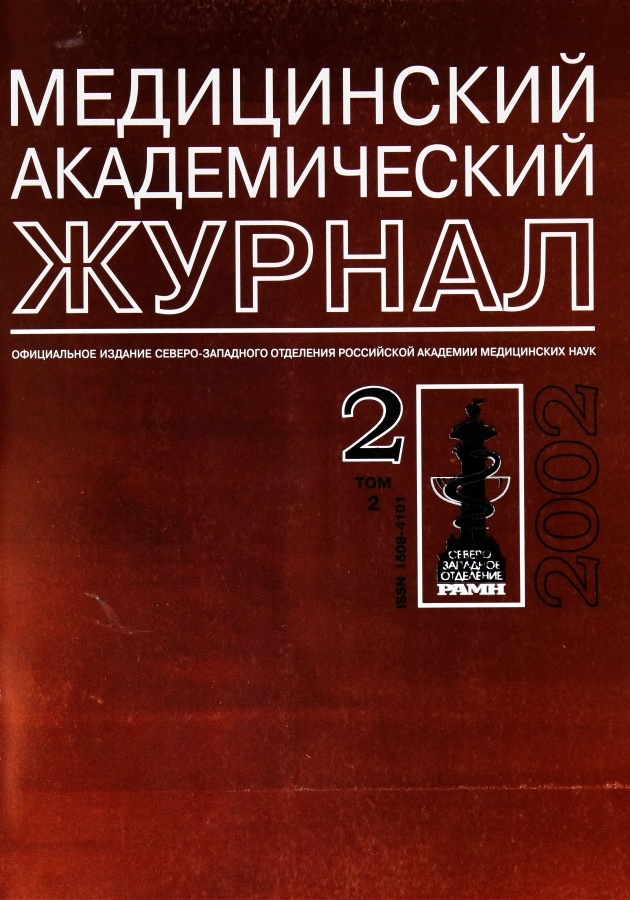Анализ клинических штаммов стрептококков группы в методами молекулярной генетики
- Авторы: Дмитриев А.В.1, Hu Y.Y.2, Shen A.D.2, Суворов A.H.1, Yang Y.H.2
-
Учреждения:
- Научно-исследовательский институт экспериментальной медицины РАМН
- Пекинский детский госпиталь
- Выпуск: Том 2, № 2 (2002)
- Страницы: 18-27
- Раздел: Фундаментальная медицина
- Статья опубликована: 31.05.2002
- URL: https://journals.eco-vector.com/MAJ/article/view/693983
- ID: 693983
Цитировать
Полный текст
Аннотация
В настоящей статье представлены новые данные об особенностях генома штаммов стрептококков группы В, выделенных в различных географических регионах. Продемонстрировано, что, несмотря на высокую степень гетерогенности, геном стрептококков группы в характеризуется консервативностью расположения генов. Показано, что для изучения эпидемиологии стрептококков группы В целесообразно совместное использование методов пульс-электрофореза и риботипирования. Выявлена генетическая родственность штаммов, обладающих геном bac.
Ключевые слова
Об авторах
А. В. Дмитриев
Научно-исследовательский институт экспериментальной медицины РАМН
Автор, ответственный за переписку.
Email: medaj@eco-vector.com
Россия, Санкт-Петербург
Y. Y. Hu
Пекинский детский госпиталь
Email: medaj@eco-vector.com
Китай, Пекин
A. D. Shen
Пекинский детский госпиталь
Email: medaj@eco-vector.com
Китай, Пекин
A. H. Суворов
Научно-исследовательский институт экспериментальной медицины РАМН
Email: medaj@eco-vector.com
Россия, Санкт-Петербург
Y. H. Yang
Пекинский детский госпиталь
Email: medaj@eco-vector.com
Китай, Пекин
Список литературы
- Bateman A., Eddy S. R., Chothia C. Members of the immunoglobulin superfamily in bacteria // Protein Science. 1996. Vol. 5 p 1939-1941.
- Blumberg H. M., Stephens D. S., Licitra C. et al. Molecular epidemiology of group B streptococcal infections: use of restriction endonuclease analysis of chromosomal DNA and DNA restriction fragment length polymorphism of ribosomal RNA genes (ribotyping) // J. Infect. Dis. 1992. Vol. 166. p 574-579.
- Chattelier S., Huet H., Kenzi S. et al. Genetic diversity of rRNA opérons of unrelated Streptococcus agalactiae strains isolated from cerebrospinal fluid of neonates suffering from meningitis // J. Clin. Microbiol. 1996. Vol. 34. p. 2741-2747.
- Dmitriev A., Suvorov A., Totolian A. Physical and genetic chromosomal maps of Streptococcus agalactiae, serotypes II and III; rRNA operon organization // FEMS Microbiol. Lett. 1998. Vol. 167. p. 33-39.
- Elliot J. А., Farmer K. D., Facklam R. R. Sudden increase in isolation of group в streptococci, serotype V, is not due to emergence of a new puised-ficld gel electrophoresis type // J. Clin. Microbiol. 1998. Vol. 36. p. 2115-2116.
- Ellis S., Kotiw M., Garland S. M. Restriction endonuclease analysis of group в streptococcal isolates from two distinct geographical regions // J. Hosp. Infect. 1996. Vol. 33. p 279-287.
- Ferrieri P., Cho D.S., Livdahl C. et al. DNA restriction profiles of nontypable group в streptococcal clinical isolates // Adv. Exp. Med. Biol. 1997. Vol. 41. p. 343-346.
- Granlund M., Oberg L., Sellin M. et al. Identification of a novel insertion element. IS 1548, in group В streptococci, predominantly in strains causing endocarditis // J. Infect. Dis. 1998. Vol. 177. P. 967-976.
- Gray B.M., Dillon H. C. GBS infections in mothers and their infants //Antibiot. Chemother. 1985. Vol. 35. p. 225-236.
- Hacker J. Pathogenicity islands and the evolution of microbes // Annu. Rev. Microbiol. 2000. Vol. 54. p. 641-679.
- Hauge M., Jespersgaard C., Poulsen K. et al. Population structure of Streptococcus agalactiae reveals an association between specific evolutionary lineages and putative virulence factors but not disease // Infect. Immun. 1996. Vol. 64. p.919-925.
- Huet H., Martin C., GeslinP. et al. Ribotyping of Streptococcus agalactiae strains isolated from vaginas of asymptomatic women // Res. Microbiol. 1993. Vol. 144. p. 457-465.
- Horaud T., de Cespedes G., Trieu-Cuot P. Chromosomal gentamicin resistance transposon Tn3706 in Streptococcus agalactiae B128 // Antimicrob. Agents Chemother. 1996. Vol. 40. p. 1085-1090.
- Jones A. L., Knoll K. M., Rubens C. E. Identification of Streptococcus agalactiae virulence genes in the neonatal rat sepsis model using signature-tagged mutagenesis // Molec. Microbiol. 2000. Vol. 37. p. 1444-1455.
- Maniatis T., Fritsch E. F., Sambrook J. Molecular cloning; A laboratory manual. Cold Spring Harbor Laboratory Press, Cold Spring Harbor. NY, 1982.
- Rolland K., Marois C., Siquier V. et al. Genetic features of Streptococcus agalactiae strains causing severe neonatal infections, as revealed by pulsed-field gel electrophoresis and hylB gene analysis//J. Clin. Microbiol. 1999. Vol. 37. p. 1892-1898.
- Rubens С. E., Heggen L. M., Kuypers J. M. IS861, a group В streptococcal insertion sequence related to IS 150 and 1S3 of Escherichia coli // J. Bacteriol. 1989. Vol. 171. p. 5531-5535.
- Russell H., Norcross N. L., Kahn D. E. Isolation and characterization of Streptococcus agalactiae bacteriophage // J. Gen. Virol. 1969. Vol. 5 p 315-317.
- Spellerberg B., Martin S., Franken C. et al. Identification of a novel insertion sequence element in Streptococcus agalactiae // Gene. 2000. Vol. 241. p. 51-56.
- Suvorov A. N., Dmitriev A. V., Ustinovich I. A. et al. Molecular analysis of clinical group в streptococcal strains by use of a and ß gene probes // FEMS Immunol, and Med. Microbiol. 1997. Vol. 17. p. 149-154.
- Suvorov A. N., Ferretti J. J. Comparative analysis of chromosomal organization of group A streptococcal strains H Proceedings of XIV Lancefield International Symposium on Streptococci and Streptococcal Diseases. 2000. p. 381-384.
- Tenover F. C., Arbeit R D., Goering R. V. et al. Interpreting chromosomal DNA restriction patterns produced by pulsed-field gel electrophoresis; criteria for bacterial strain typing H J. Clin. Microbiol. 1995. Vol. 33. p 2233-2239.
Дополнительные файлы






